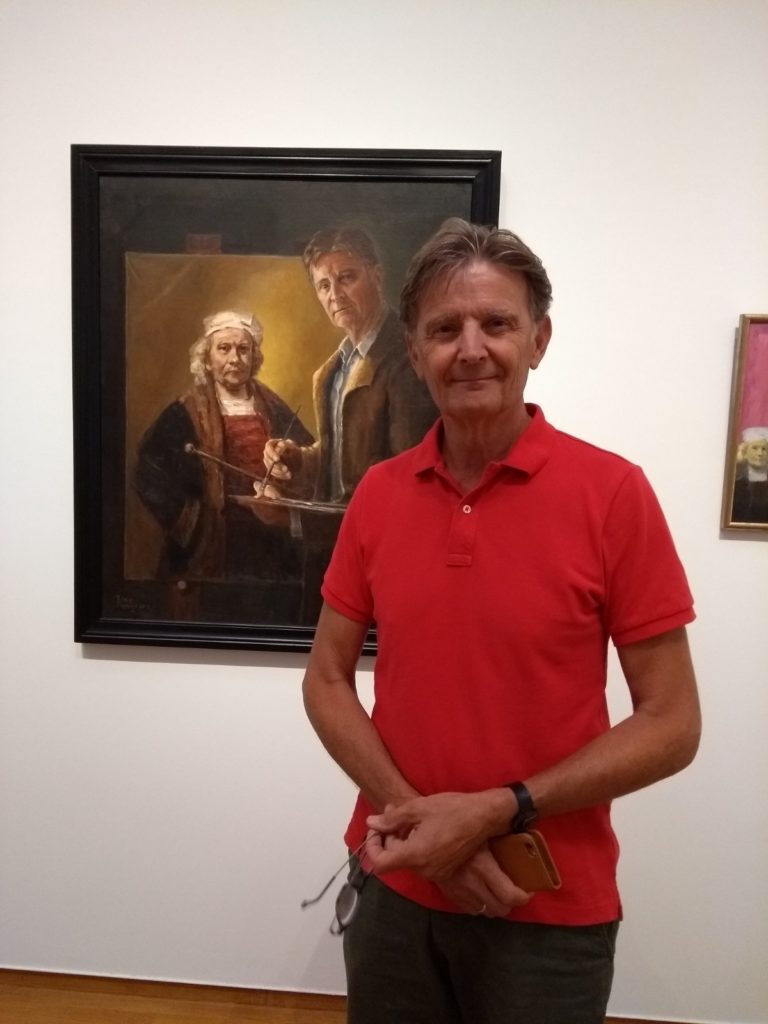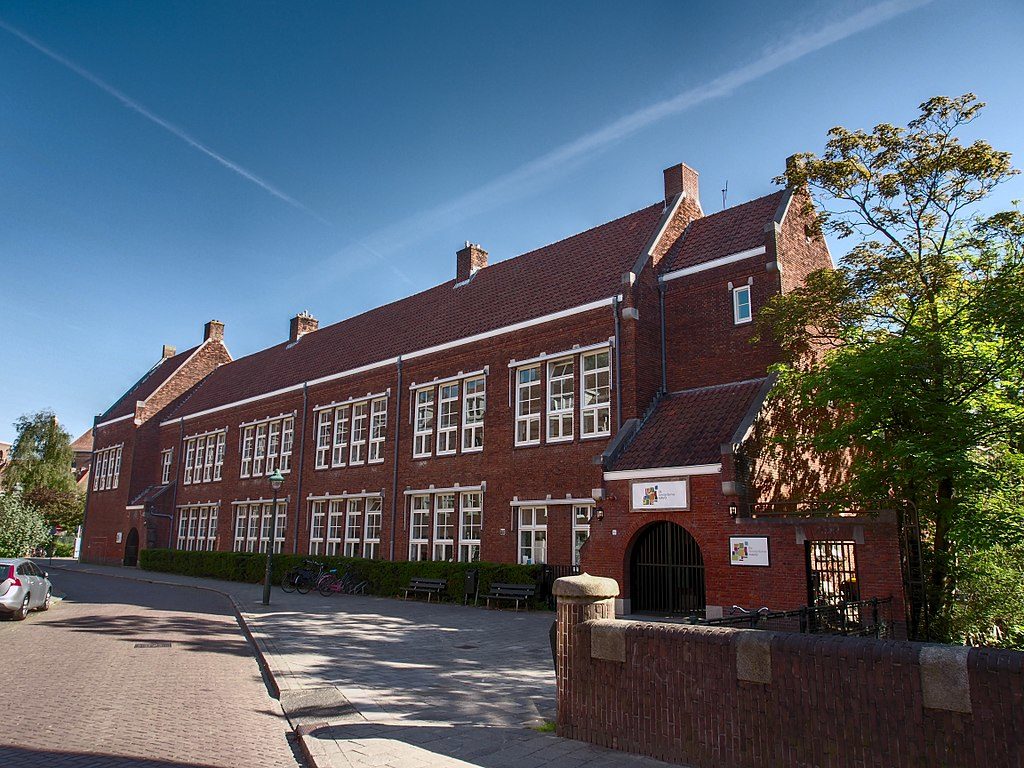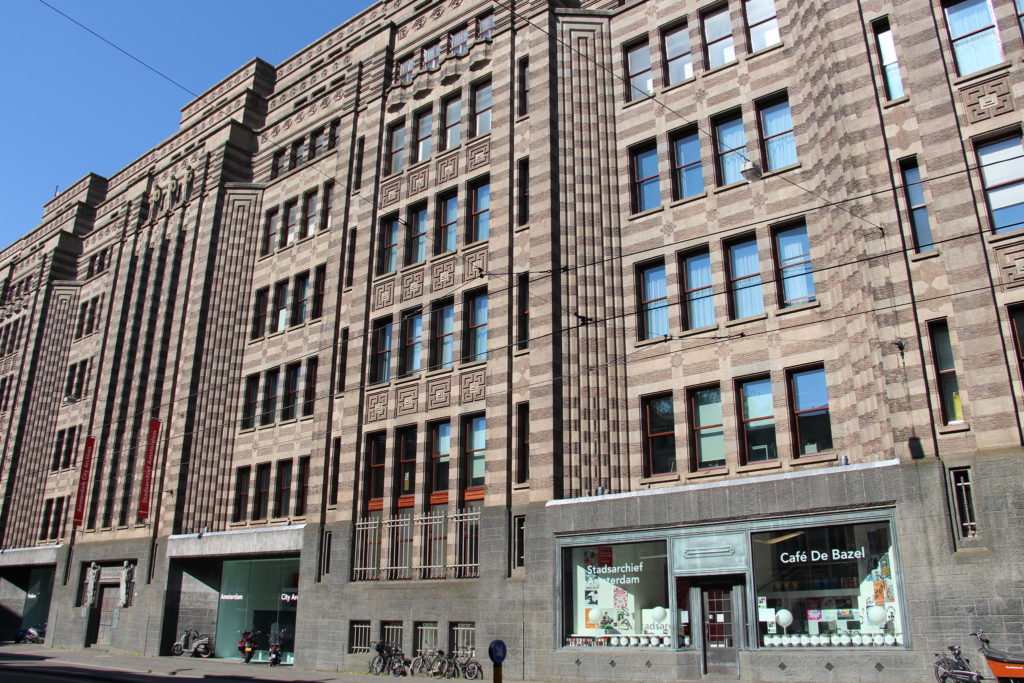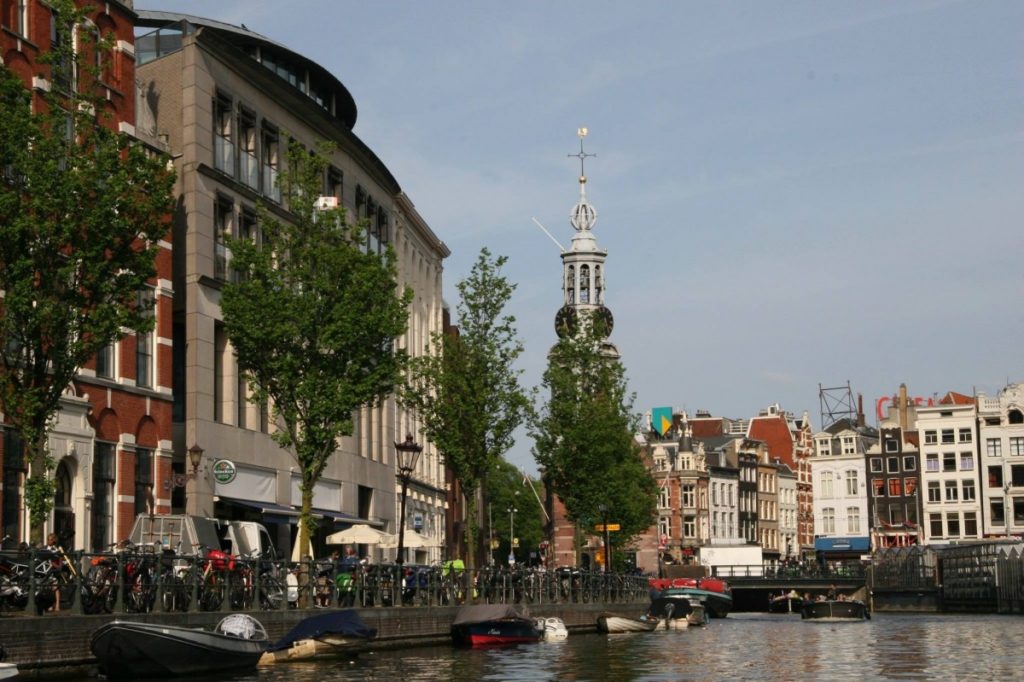See amsterdam through the eyes of A local
Discovering Amsterdam with a local is an experience in itself. The best part of Amsterdam are the Amsterdammers—these sassy, whimsical, pragmatic, and unapologetically free people.
In our lifetime in Amsterdam, we’ve come to meet some truly amazing locals. People of different ages, with different jobs, memories, voices. But they have one thing in common—a deep personal connection to Amsterdam. Many have been living here for generations.
We asked them to share their stories of Amsterdam: their favorite places, things to do, what they are proud of and what they dislike. These conversations are unfiltered and honest, just like the real Amsterdam we like to show to our guests. Enjoy a glimpse of Amsterdam with a trusted local!

Remy Diephuis is 66. He is an athlete, a marathon runner, and an amateur painter. His Self-Portrait with Rembrandt is featured at the Rijksmuseum’s exhibition Long Live Rembrandt (July 15 — September 15, 2019).
Born and raised Amsterdammer, he lives since 1963 in Osdorp—a quiet, green neighborhood in the West of Amsterdam.
We sat with Remy to talk about Rembrandt, painting, and his own best-of unmissable places in Amsterdam.
How did your Self-Portrait with Rembrandt come into being?
The Rijksmuseum is heaven on earth for a painter. When the exhibition was announced, I couldn’t miss the opportunity! I immediately started thinking, ‘What could I do?’ Clearly, it had to be Rembrandt’s colors and chiaroscuro—but a simple copy of a Rembrandt’s painting would be too easy; I assumed that it wouldn’t be enough to get me in the exhibition.
So, I started with Rembrandt’s self-portrait with two circles—one of my favorites. My whole work is exactly the same size as that original painting. Then I added my own self-portrait inside. For this part, my wife Mieke took a picture of me holding a brush, in front of the unfinished canvas, and I painted myself from the photograph.
What is your personal connection to Rembrandt?
I discovered Rembrandt when I was ten years old. Probably through my father, also an amateur artist. I was so impressed with his style—the light, the shadows, the brushstrokes. Around twenty, I already created some copies of Rembrandt’s works. I love strong paintings, with a lot of paint. Both Rembrandt and Van Gogh worked like that, with impasto. I myself love working with oil; watercolor is much too complicated for me.
Anything else that brings you close to Rembrandt?
Most of my work is portraits. Until now, it has been mostly friends and acquaintances. But just recently, I landed my first ‘real’ client—a Belgian couple who wanted a family portrait with their seven grand-children. It’s a breakthrough!
I believe that everybody should have a portrait. It’s not like a selfie—it’s unique, and no one would ever throw it away later. Actually, I think that a lot of people would like to have their portrait made by an artist, but they don’t dare asking. I have to pitch it to them. There is a Dutch saying, ‘Doe maar normaal, dat is al gek genoeg’—’Just act normal, that’s already silly enough.’ The Dutch don’t like to stand out.
How did you get into painting?
I come from a creative family. My dad painted, my four siblings sing, play guitar. I’m the quiet one, with painting and drawing. But I only picked it up seriously about ten years ago, in my fifties. It was my wife’s idea, when I got injured and couldn’t run anymore.
A friend of mine was a teacher at the Amsterdam School of Arts. I offered him a deal. I would tinker with his personal website, and he would give me painting lessons. For about a year, I worked at his studio every Friday afternoon. He showed me how to handle a brush. I do have one talent—I pick up things easily by copying others. Other than that, it wasn’t much of an academic lesson—I was just working there on my own, and he would give me advice as needed. Painting is about solving problems.
What is your work routine like?
Once the paint is out of the tube, it has to be used within a day. So, I break my day into two sessions of three or four hours. Two days, then I take a break to allow the paint to dry. I do two sprints like this in a week. It takes me about two months to complete a portrait.
I work fast. Probably too fast. I get an idea and I jump right in. For the Self-Portrait with Rembrandt, I had only made one sketch. I keep telling myself that I should slow down and think things through before I start.
But I do reflect a lot on a painting while I’m working. It takes me as long to sit and look at it, playing with ideas in my mind, as to actually paint.
If you could have a drink with Rembrandt, what would you talk about?
I’m not much into artists’ lives, I care more about their work. So, I would ask him about his technique. I would love to know more about his warm and cold colors.
And how does he paint? How does he prepare? I was surprised to learn that Rembrandt made a lot of sketches beforehand—I had always assumed that he just stood in front of a white canvas and started painting.
I would also ask him if he had a model for every figure. Today, we work with photos—people are so busy, no one would sit for me for half a year.
How is being an artist different today from what is was in Rembrandt’s day?
The idea of art is very different today from what is was in Rembrandt’s day. Rembrandt was in a business of making portraits. He probably would be a photographer now.
Why do I paint myself? I just talked with my brother-in-law the other day about it. He claims that we do anything we do just to impress the opposite sex.
For me, it’s the same question as, ‘Why do I run?’ It makes me feel good. Sometimes I don’t even feel like painting, but I start. I put on a good piece of music to go with it. And suddenly I feel great.
What are your favorite spots in Amsterdam?
The Gunters en Meuser in the Jordaan, on the corner of the Egelantiersgracht and the Prinsengracht. It’s the oldest hardware store in Amsterdam. That’s where I started working, at 16. I always take friends there when they come to visit. And while we are there, I also show them the Claes Claesz. hofje—a truly silent place in a hectic city.

The Linnaeushof, a former monastery. I lived there for a while, and I learned to ice-skate there (Remy’s other favorite sport—like for many Dutch people).

The neighborhoods of Amsterdam Zuid and Spaarndammerbuurt to admire the architecture of the Amsterdam School.
Any favorite shops?
I used to go to the second-hand bookstore De Slegte, but it doesn’t exist anymore. Today, I really love Van Beek, near my place. I go there for my paints and all kinds of art books. When I sell a painting, I always give myself a book for present. Never mind that I don’t have time to read half of them. The last one I bought was by a huge book by Richard Schmid about alla prima painting.
Could you design your perfect day in Amsterdam?
I would get up early, around 7, and make breakfast for my wife and myself. She has been eating the same breakfast since twenty years—oats. Too boring for me! I switch things up—eggs, peanut butter sandwiches, yogurt. But I do love bread. I get if from my bakery.
I would go for a quick run or hit the gym for half an hour, and at 9, I would be at the Van Gogh museum or at the Rijksmuseum. In the morning, there is nobody else there, you can go straight to your favorite room or painting, and sit there for a while, undisturbed. At the Rijksmuseum, I could pick any room. At the Van Gogh museum, I would probably head to the top floor, to the Almond Blossoms. I would spend an hour there—not too long.
Next, a walk. I would start with the Nieuwe Spiegelstraat—there are lots of nice art shops there. I like the Peter Donkersloot gallery. It’s a contemporary Dutch artist who makes large portraits of celebrities. A bit too commercial, but still very good.
From the Nieuwe Spiegelstraat, I’d walk to the Amsterdam City Archives. It is located in a great historic building, De Bazel—worth a visit during the Heritage Days (14-15 September 2019). It used to be a bank, and apparently, it is connected with an underground tunnel to a building on the opposite side of the Keizersgracht, where money was stored.

By then, it would be lunch time. I would stop at Leidseplein for some French fries from the Vlaams Friethuis.
From there, I would head to the Mint Tower (Munttoren) and sit there with my sketching pad, looking at the Flower Market and the Rokin.

Heading back home, I would avoid the Kalverstraat. The same shops as everywhere in the world, thanks but no thanks! Instead, I would take the Keizersgracht all the way to the Westerkerk.
Where do you go when you need to escape from Amsterdam for a day?
To the dunes! The Waterleidingduinen to the south of Zandvoort is a fabulous area for a long walk. It is quiet, clean—drinking water in Amsterdam comes from here—, and beautiful in any season, particularly in winter. The colder it is, the further you can see. After a snowfall, it looks like a fairy tale.

What is, to you, the main quality of Amsterdam?
Freedom. It’s a liberal city. Russell Shorto got it right. You can do anything you want in Amsterdam. There are no ghettos. People are friendly and open-minded. I do think that Amsterdammers are different in that from the rest of the Dutch. We don’t have any prejudices. Any religion is welcome in Amsterdam—and better yet, no religion at all. Sexual preferences are not a problem. Things that aren’t possible in many countries are very easy here. It’s something we can really be proud of.
I also like it that Amsterdam is a green city, with lots of trees. It never stops amazing my friends from other cities. You can bike everywhere. We take care of the city—roads are being repaired, areas that used to be not so pleasant are getting a nice facelift, and new buildings aren’t ugly.
Is there anything that annoys you about Amsterdam?
Not much, but I do dislike that people keep putting garbage in the street, next to the containers. It’s full of plastic crap, and I regularly see cans floating in the canal near my house. But it’s a minor thing, and it’s getting better.
What about the tourists?
I don’t have any problem with the tourists. Sure, the city center is crowded, but we got what we asked for. Personally, I only come to the center every other week, and it doesn’t bother me much.
What is your neighborhood like?
I live in Amsterdam West. It has changed a good bit since we moved there, in 1963. My street was built as a single project; most of my immediate neighbors have been living there for at least 35 years, and they know each other from the beginning.
But today, most of the population is immigrants. When I go to the market, it’s like Marrakesh. Not that I mind! It still feels like home. And there are some advantages. Grocery shops are open anytime, even on Christmas morning.
If you’re new, it doesn’t mean you can’t be a part of the group. You just need to be open-minded. I wouldn’t say that I have close friends among my new neighbors—it simply takes much longer for me to call someone a friend. But we chat, we have tea together. It’s important to get along well with your neighbors.
Amsterdam is a village, you know. My American friends always assume that the population is about 2,5 mln people. In fact, it’s not even 900,000.
If you could get on a billboard a message to people visiting Amsterdam, what would it be?
I Amsterdam. That was brilliant! It’s like ‘Ich bin ein Berliner.’ It makes me proud that people feel at ease here. Let people do what they want to do, help them be a part of the community, give room to everybody, and a lot of problems would be solved. The world would be a much better place if every city were like Amsterdam.






7 thoughts on “Amsterdam with a local: Remy Diephuis”
Irina, you have accurately captured the heart & passions of a man I have known for over two decades. Remy is a special person with true talent.
Thank, Irina for an excellent insight into the life of my friend Remy!
Remy is an exceptional person indeed, we are honoured to have had a chance to talk to him. Thank you Dave!
What a great story and impression about Amsterdam!
Prachtig verwoord, Remy! Mooi jou zo aan het woord te ‘zien’.
Met creatieve groet,
Peter Bottema
He is indeed very talented and modest as well.
Wat een mooi stuk Remy, goed verwoord! Als jongste zus van Remy kan ik zeggen dat ik hartstikke trots op hem ben en vind dat hij terecht zijn werk in het Rijksmuseum mocht tentoonstellen. Liefs Joke
Remy great to see you enjoying your passion and looking wise and healthy. Will see you soon in Amsterdam. Ash